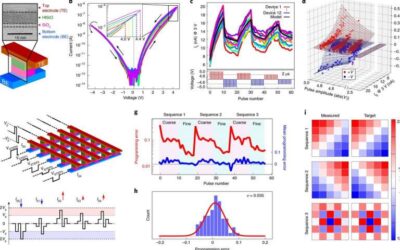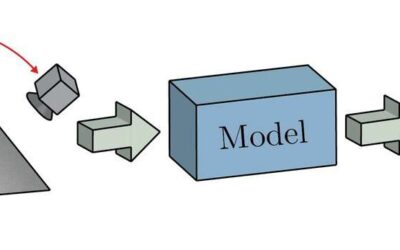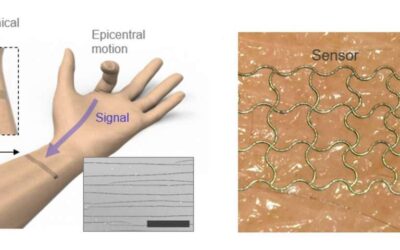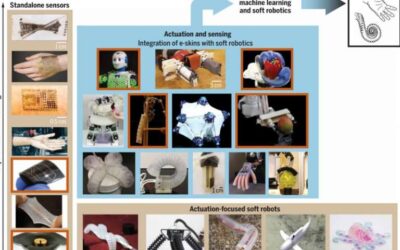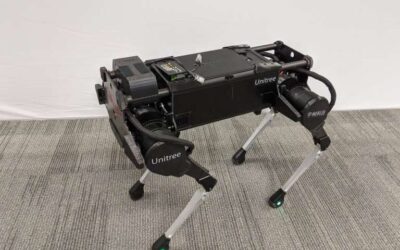In recent years, researchers have developed increasingly advanced natural language processing (NLP) techniques that can be trained to process, interpret and respond to sentences in human languages. In addition, some have developed toolkits that can guide researchers...
Machine learning & AI
Executing low-power linear computations using nonlinear ferroelectric memristors
Researchers at Toshiba Corporate R&D Center and Kioxia Corporation in Japan have recently carried out a study exploring the feasibility of using nonlinear ferroelectric tunnel junction (FTJ) memristors to perform low-power linear computations. Their paper,...
Using deep learning to give robotic fingertips a sense of touch
Researchers at the University of Bristol have recently trained a deep-neural-network-based model to gather tactile information about 3-D objects. In their paper, published in IEEE Robotics & Automation Magazine, they applied the deep learning technique to a...
A model that estimates tactile properties of surfaces by analyzing images
The ability to estimate the physical properties of objects is of key importance for robots, as it allows them to interact more effectively with their surrounding environment. In recent years, many robotics researchers have been specifically trying to develop...
Creating chatbots with multiple conversational skills
In recent years, chatbots have become increasingly sophisticated, and they now provide basic assistance to humans on a variety of online platforms, including Facebook and a number of e-commerce sites. So far, chatbots have typically been designed to excel at one...
A deep-learning-enhanced e-skin that can decode complex human motions
Researchers at Seoul National University and Korea Advanced Institute of Science and Technology (KAIST) have recently developed a sensor that can act as an electronic skin and integrated it with a deep neural network. This deep learning-enhanced e-skin system,...
Reviewing progress in the development of machine learning-enhanced e-skins
Researchers at University of California, Yale University, Stanford University, University of Cambridge and Seoul National University have recently carried out a study reviewing recent efforts in the development of machine-learning-enhanced electronic skins. Their...
A system to produce context-aware captions for news images
Computer systems that can automatically generate image captions have been around for several years. While many of these techniques perform considerably well, the captions they produce are typically generic and somewhat uninteresting, containing simple descriptions...
A 3-D memristor-based circuit for brain-inspired computing
Researchers at the University of Massachusetts and the Air Force Research Laboratory Information Directorate have recently created a 3-D computing circuit that could be used to map and implement complex machine learning algorithms, such convolutional neural networks...
A system to reproduce different animal locomotion skills in robots
Researchers at Google Research and the University of California, Berkeley, have recently developed an imitation learning system that could enable a variety of agile locomotion behaviors in robots. Their technique, presented in a paper pre-published on arXiv, allows...


